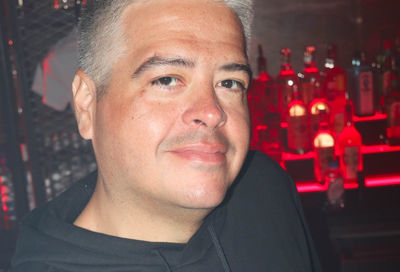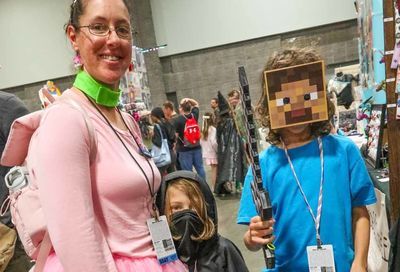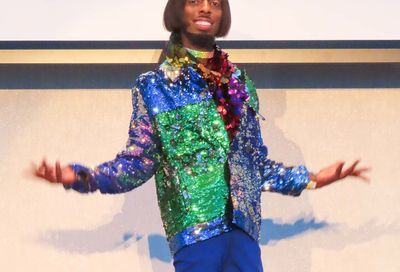Bloc Party
Fighting with the Gay Liberation Front
Gay liberation was a product of its times. Its birth at the end of the ’60s was no accident. By the time street queens and others rioted outside the Stonewall Inn in Greenwich Village in late June, 1969, the groundwork had been laid for one of America’s most despised minorities to get militant.

Gay Liberation Front
Social change was in the air. The civil-rights movement had succeeded in passing the 1964 Civil Rights Act. The Black Panthers, a militant black-power group, were feeding poor people and developing a strategy for black self-empowerment — not to mention having run-ins with the police.
The women’s movement had been reborn from the embers left by the struggle to gain the vote half a century before. The anti-Vietnam War movement was beginning to draw huge numbers of protesters into the streets. Campuses were igniting with student strikes and takeovers of administration offices.
Stonewall may have started the modern ”gay” movement, but there had been ”homophile” groups struggling to change the American public’s perception of queers since 1949 when Harry Hay, a Communist and union organizer, brought together the first Mattachine Society. The movement turned conservative in the face of the anti-Communist witch hunts of the 1950s, and the homophile movement of the late ’60s didn’t have much relevance for the new generation of young people who were ”tuning in and dropping out.”
Instead of picketing respectfully, those young folks identified immediately with the fighting that broke out at Stonewall. Within days, the first Gay Liberation Front was formed. Its name reflected its radical bent: It was taken from the National Liberation Front — a.k.a. Vietcong — which was fighting the U.S. military in Vietnam.
GLF was radically different from the homophile groups. It didn’t operate by Robert’s Rules of Order. Decisions were made by consensus. Anyone could be a member by merely showing up at a meeting.
To Frank Kameny, a gay pioneer of both the precursor and successor movements, the GLF method bordered on chaos.
”I hesitate to get into some of the rhetorical terms, but basically, with that understanding, they were sort of far left, resolutely unstructured,” Kameny recalls, adding that he attended several meetings of the D.C. group of GLF. ”Meetings went on forever and wandered all over the place, taking on a mélange of all the issues of the day. There was no structure for doing, only for talking.”
The philosophy of GLF was also radically different, holding that gay people were special and distinct from straights with an identity and culture that didn’t need to change in order to accommodate anyone. It was society that needed to change.
Warren Blumenfeld, today an assistant professor at Iowa State University and past editor of the International Journal of Sexuality and Gender Studies, was newly arrived in Washington during the short existence of the local branch of the GLF. A member of the group, he remembers quite a different experience than does Kameny.
”Possibly it was short-lived, but in those few years there was an incredible amount of work we did,” says Blumenfeld, ticking through protests, actions and arrests. ”Those were the best years of my life in many ways. Every night, I didn’t want to go to bed because I thought I would miss something. Being part of organizing demonstrations, consciousness-raising groups, being part of a movement, I felt that I had a community for the first time in my life.”
GLF believed that it was a part of the struggles of all oppressed peoples. GLF members made alliances with the Black Panthers and the Young Lords, a Puerto Rican activist group with chapters in several cities. Both groups embraced GLF. In fact, Panther Chair Huey Newton issued a letter to his comrades calling on them to support both the gay and women’s liberation movements. Encouraged by this announcement, GLFers attended Panther conferences.
Like their hippie counterparts, many GLFers lived in communes. In Washington, the address was 1620 S St. NW, followed by a second commune at 1624 S St. NW.
Blumenfeld didn’t reside — technically — at either house, but he was certainly a regular at 1620.
”We had a wonderful house on S Street,” says Blumenfeld. ”That was kind of the central headquarters for organizing for the May Day demonstrations in 1971. I basically lived there without paying rent. It was one, giant, political party. We enjoyed organizing, socializing, protesting. There was a sense of fun and creativity about it. We were going into uncharted territory.”
Many GLFers explored polyamorous relationships and frowned upon traditional pair-bonding such as gay or straight marriage, butch/femme and top/bottom role-playing and societal beauty standards. They resisted the draft and didn’t support gays — or anyone — in the military. They weren’t into reforms such as gay-rights laws, nor of being members of traditional religions. A popular chant of the time was ”2, 4, 6, 8, smash the church, smash the state.” It embodied the spirit of the gay-liberation movement in those post-Stonewall days.
By far, GLF’s most successful strategy was urging queers to simply come out of the closet. Before long, the new cry could be heard everywhere: ”Out of the closets and into the streets!” Thousands came out.
Within a few years of its creation, GLF would split once more to give birth to the more traditionally structured Gay Activists Alliance, a group that would go on to dominate the GLBT movement for several years. In Washington, the GAA evolved into what we know today at the Gay and Lesbian Activists Alliance, the country’s longest continuously running GLBT advocacy organization.
While GAA members shared many of the same ideals of GLF, including opposition to the war, support for women’s liberation and, in some cities, support for the Black Panthers, GAA as an organization pushed for gay-rights laws and other political reforms as the primary goals.
Still, the GLF may have been short-lived, but its impact was long-lasting.
”We felt we really wanted to revolutionize the society from the ground up, rather than assimilate,” explains Blumenfeld. ”Law reform was not our focus. Our focus was the cultural sphere, breaking down prejudice.”
Tommi Avicolli Mecca is editor of Smash the Church, Smash the State: The early years of gay liberation, which will be published by City Lights Books in June 2009 for the 40th anniversary of Stonewall. His Web site is www.avicollimecca.com.
Will O’Bryan contributed to this article.
Support Metro Weekly’s Journalism
These are challenging times for news organizations. And yet it’s crucial we stay active and provide vital resources and information to both our local readers and the world. So won’t you please take a moment and consider supporting Metro Weekly with a membership? For as little as $5 a month, you can help ensure Metro Weekly magazine and MetroWeekly.com remain free, viable resources as we provide the best, most diverse, culturally-resonant LGBTQ coverage in both the D.C. region and around the world. Memberships come with exclusive perks and discounts, your own personal digital delivery of each week’s magazine (and an archive), access to our Member's Lounge when it launches this fall, and exclusive members-only items like Metro Weekly Membership Mugs and Tote Bags! Check out all our membership levels here and please join us today!





















